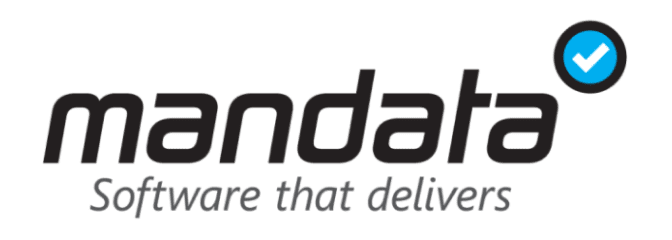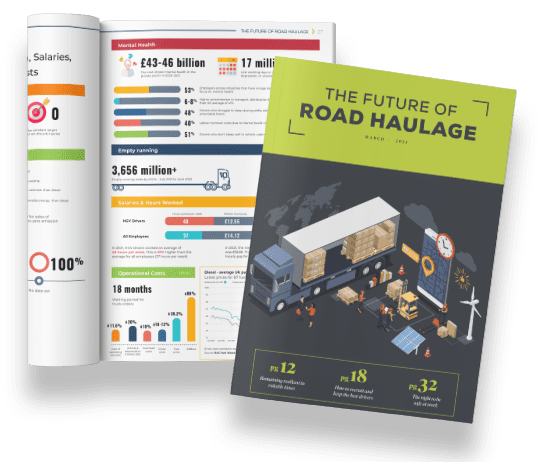Mastering On-Time and In-Full Delivery (OTIF): A Complete Guide
In this blog, we’ll explore how haulage businesses can improve on their OTIF score, and the ways in which TMS can help hauliers achieve and maintain consistency to deliver excellent customer service every time.
What is OTIF?
On Time and In Full (OTIF) is an industry recognised standard, which assesses a company’s performance in fulfilling its delivery commitments to customers. This metric evaluates whether deliveries are made within the agreed time frame, to the correct location, and with the expected quantity without anything missing.
Delivering a positive and consistent OTIF score is as important as an internal measure of productivity, as it is important as an external indicator of reliability. From an internal perspective it helps the company to save on costs and especially the avoidance of late delivery penalties that can be hefty and erode what are already slim profit margins. From a customer retention and acquisition perspective, consistently delivering orders on time and in full enhances customer satisfaction, which, in turn, improves customer retention, loyalty and word of mouth.
How is OTIF calculated?
Your OTIF score is calculated as follows:
On Time In Full Rate = (Total Deliveries Made On Time and In Full / Total Deliveries Made) x 100
As an example, let’s say that you have delivered 1400 deliveries to your customer, and 1024 of them were delivered on time and complete, 1024/1400 x 100 = 73% OTIF rate.
Although a 100% OTIF ratio would be perfect, this is almost impossible due to the unpredictable nature of transport, but according to Fourkites, a solid benchmark score to aim for is considered to be 80% or higher.
This is an average score, and it is always worth keeping in mind that differing sectors and customers may have varying expectations – but typically, the higher the value or time sensitivity of a consignment, the higher the expected OTIF score.
What is OTIFIC?
OTIFIC is the metric of delivering on-time, in-full and invoiced correctly. This extra element ensures that your deliveries are invoiced correctly, with no errors that could result in delayed payments of frustrated customers.
How to get from OTIF, to OTIFIC
As mentioned earlier, using OTIF as an internal indicator of productivity can be a tremendous help in identifying areas of risk. By expanding the acronym to OTIFIC, as some companies have done, financial risk is kept in focus by also measuring the ‘internal last mile’ of any job: invoicing.
By considering all three aspects (On-Time, In Full, and Invoiced Correctly), OTIFIC provides a more comprehensive assessment of a company’s ability to fulfil its delivery commitments and maintain customer satisfaction. It addresses not only the operational aspects of delivery but also the financial accuracy and transparency of the billing process.
The challenges of achieving a high OTIFIC score
Achieving a high OTIFIC score is not without its challenges. Numerous factors can hinder your ability to meet on-time, in-full, and accurately invoiced deliveries.
External factors can include traffic congestions, vehicle breakdowns, or even other supply-chain issues. Specific contractual agreements can also affect the overall OTIFIC score, with invoices often varying dependent on that specific job.
Often a small mistake can affect the business in a big way. Errors with invoicing can lead to customer dissatisfaction and reputational damage. Costly mistakes further up the supply chain could lead to a domino effect, hindering delivery times and quality of service.
How a Transport Management System can help improve OTIFIC
There are many ways to ensure a high OTIFC score but one of the most efficient is by using the most modern tech. Using a Transport Management System (TMS) can be key to enhancing OTIFIC processes, when used in the right way. A TMS not only gives you full visibility of delivery data and metrics, but also the ability to amend live deliveries should they need any quick fixes.
Planners have the tools to optimise routes for drivers, helping your deliveries reach their intended destination on time. Not only this but utilising a TMS’ real-time tracking functionality will give your customers live progress updates, helping set expectations of when their delivery is due. The planner can quickly act if any issues arise and amend the live job to ensure successful completion of the job.
Pricing and cost information is transferred and updated from job creation, and as the job progresses, ensuring that the final invoice is accurate and standardised for customers.
To conclude, in the fast-paced world of logistics and supply chain management, achieving a high OTIF score is critical to retaining customers and staying competitive. A TMS is a powerful tool that can help you meet on-time delivery commitments, deliver orders in full, and ensure accurate and timely invoicing. By optimising routes, providing real-time visibility, and making data-driven decision, a TMS can play a pivotal role in enhancing your OTIF performance. It’s not just a technology investment; it’s a strategic advantage that can drive customer satisfaction and operational excellence.
Read more: 9 Benefits of a Transport Management System for Haulage Businesses

